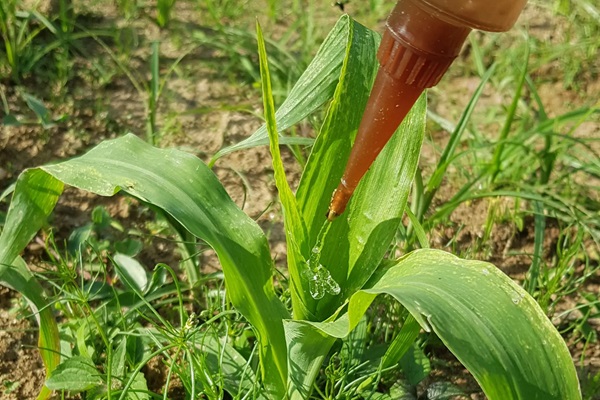Ekologický poľnohospodársky gél nahrádza toxické pesticídy červami

- Autor:
- Roman Mališka
- Zverejnené:
- 19. 4. 2024
- Hodnotenie:
- Už ste hlasovali.
Ukázalo sa, že gél naplnený červami chráni plodiny pred škodcami bez použitia pesticídov, ktoré nie sú šetrné k životnému prostrediu. Jeho zložkou je pritom množstvo drobných háďatiek, ktoré bežne nedokážu prežiť mimo svojho podzemného prostredia.
Nematódy sú nepatrné škrkavky, ktoré sa zvyčajne nachádzajú na vrchu niekoľkých centimetrov pôdy. Málokedy presahujú dĺžku asi 2,5 milimetra. A kým niektoré druhy jedia korene rastlín, iné pôsobia blahodarne.
Jedny z tých ďalších, známe ako entomopatogénne nematódy (EPN), kladú vajíčka do tiel hmyzu. Keď červy kladú tieto vajíčka, vylučujú toxín, ktorý rýchlo zabíja hostiteľský hmyz. Niekedy je tento hmyz škodcom, ktorý sa živí plodinami. V takýchto prípadoch môžu farmári skutočne zaviesť EPN do svojej pôdy prostredníctvom tekutej formulácie ako prostriedok na kontrolu škodcov bez pesticídov.
Bohužiaľ, keď sa EPN odstránia z pôdy, čoskoro zomrú v dôsledku vystavenia slnečnému ultrafialovému žiareniu alebo jednoducho vyschnú. To znamená, že ich nemožno aplikovať na listy rastlín, čo je časť rastliny, ktorú konzumuje väčšina škodcov. Jedným z takýchto škodcov je húsenica červca, ktorý spôsobuje veľké škody na plodinách kukurice v Afrike a Ázii.
Práve preto bol vyvinutý nový hydrogél na ochranu nematód. Tím vedcov, pod vedením Patricka Falleta, zo švajčiarskej univerzity v Neuchâtel začal získaním pôvodného rwandského EPN (Steinernema carpocapsae), ktorý sa zameriava na húsenice. Výskumníci potom vytvorili hydrogél, ktorý pozostáva zo živých háďatiek suspendovaných v želatínovej matrici netoxickej biodegradovateľnej karboxymetylcelulózy.

V poľných pokusoch uskutočnených v Rwande dobrovoľníci použili tesniace pištole na nanášanie gélu na prasienok rastlín kukurice každé dva týždne počas jedného vegetačného obdobia (prasienok je bod na rastline, z ktorého vychádzajú listy, keď rastú). Ostatné kukuričné polia boli ošetrené komerčným tekutým prípravkom proti nematódam, ošetrené bežne používaným pesticídom cypermetrínom, alebo ponechané neošetrené ako kontrolná skupina.
Hoci všetky tri ošetrenia mali určitý účinok na húsenice, gél sa ukázal ako najlepší, pretože znížil zamorenie o približne 50 % v porovnaní s kontrolnými poľami. Výsledkom bolo, že polia ošetrené gélom vyprodukovali jednu ďalšiu tonu kukurice na hektár.
Tím uvádza, že komerčná verzia hydrogélu by mala byť nákladovo efektívna, neškodí ľuďom ani životnému prostrediu a červy si voči nemu nevybudujú odolnosť.
„Celkové výsledky naznačujú, že precízne formulované a ľahko aplikovateľné háďatká môžu byť vysoko efektívnou, cenovo dostupnou a udržateľnou alternatívou k insekticídom,“ uvádzajú vedci v článku o štúdii, ktorá bola nedávno zverejnená v magazíne PNAS Nexus.


